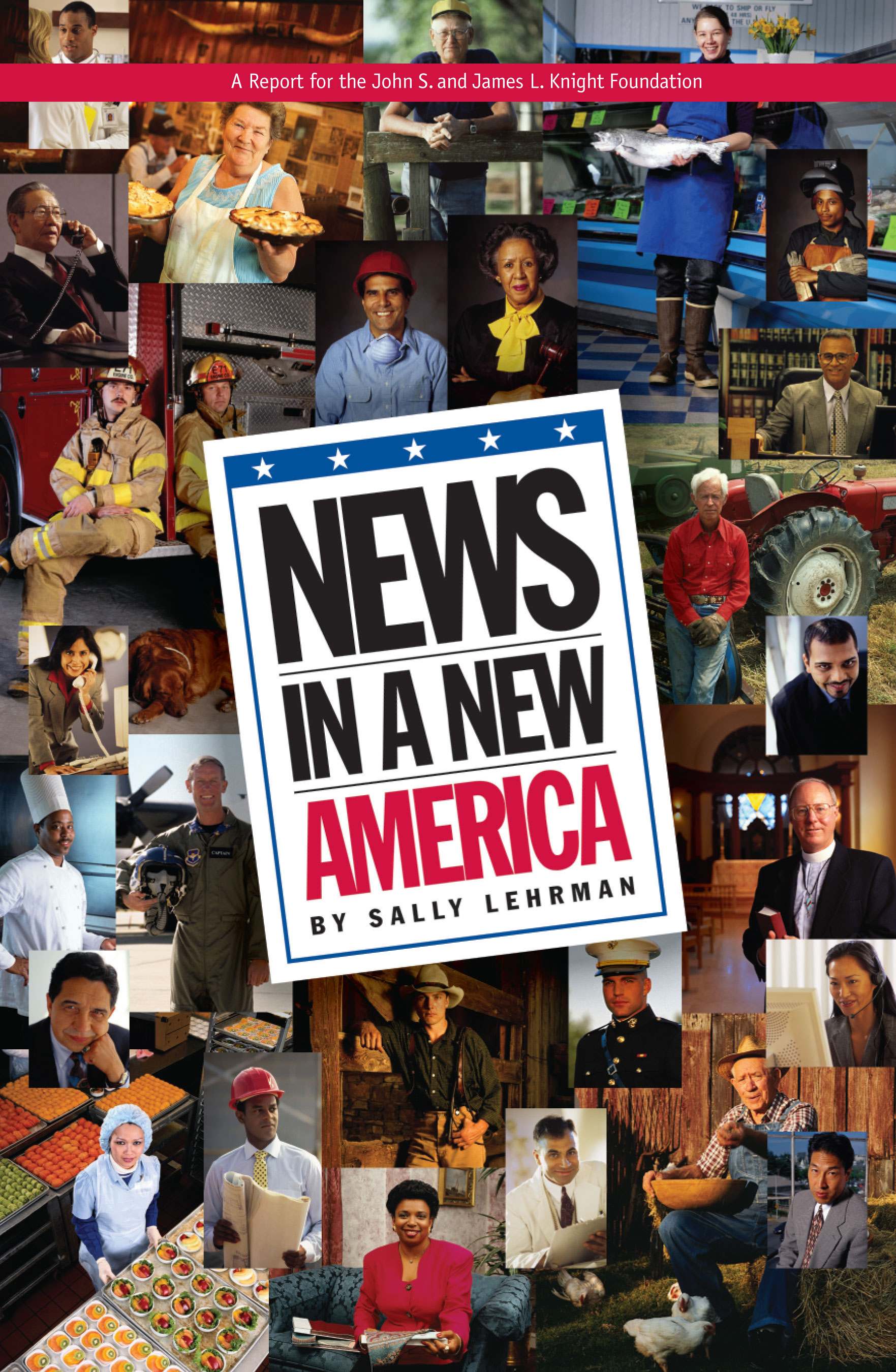Good journalists should be able to tackle any assignment, whether it is covering their own community or covering a community with which they have had little or no personal contact.
In short, they should be able to give us news that is as American as America.
That’s the ideal.
The truth is, we all have blind spots.
So it helps to make good journalism a group effort, to have colleagues – copy editors, city editors, producers and general managers with diverse backgrounds and different points of view working as a team to help the newsroom as a whole understand the community as a whole.
Some newsrooms operate with a diversity model of “us and them”: White men may feel pressured to accept African Americans, Latinos, Native Americans, Pacific Islanders, Asians, gays and women as equal colleagues, while those journalists may feel as if they must work overtime helping white co-workers understand the world outside the mostly white newsroom. Journalists hired for their diverse views, as well as for their skills, become worn down by countless attempts to explain a story to an editor who doesn’t appreciate the basic idea that different people can be interested in different things.
This is not the best scenario, nor is it the best approach. A newsroom divided cannot help America understand itself. If we are to fulfill our obligation to accurately, fairly and completely cover all segments of our communities, we as professionals must learn to talk across the fault lines of race, class, gender, generation and geography, sometimes putting aside our need to agree and striving simply to understand.
My late father, Robert C. Maynard, the former editor and publisher of The Oakland Tribune, used to say that a newspaper should be a tool for community understanding, a place where you see not only your life, but also the life of your neighbor, accurately and fairly represented. I’m sure that if he were alive today, he would include broadcast, radio and the Internet in that description.
These days that idea may seem a pipe dream, with blue state and red state residents seeming to turn to very different sources of news – talk radio, cable television, the Internet, the growing ethnic media that increasingly fills the needs of people who don’t otherwise see their lives accurately reflected.
Yet it is that media fragmentation that makes it even more urgent to work toward understanding. As changing demographics collide with the ever-growing number of news sources, there is the danger that “mainstream” media may become a niche media in the not-so-distant future if we do not more accurately portray the daily lives of all citizens in all of our coverage.
To understand some of the forces hastening the dismantling of the mass media, one need only look at the slow pace with which we are desegregating the nation’s newsrooms.
Back in 1978, the American Society of Newspaper Editors (ASNE) began its annual census. At the time, the goal was for the nation’s newsrooms to mirror the nation’s society by the year 2000. At the start of the census, journalists of color made up 4 percent of the work force and were growing.
Much of that growth was fueled by the fact that as the civil rights movement morphed into the black consciousness movement, leaders at most news organizations discovered they did not have a staff capable of getting the story.
Then the fires died, both literally and figuratively.
Today, for many newspapers, their most diverse years are in the past, according to a Knight Foundation-funded study (see Appendix I). Among the 200 largest newspapers, 73 percent employ fewer nonwhites, as a share of the newsroom jobs, than they did in some earlier year from 1990 to 2004, Bill Dedman and Steve Doig wrote in the report released in spring 2005.
In 2005 the ASNE annual census found that the share of journalists of color in the nation’s newspapers hovered at 13 percent. A similar study done for the Radio and Television News Directors Association found that people of color account for a little more than 21 percent of local news staffs and women about 39 percent. Slightly better, but still far from reflecting a country that is 30 percent people of color and 50 percent women.
Numbers alone, though, are not the entire story. As the report demonstrated, organizations that are truly committed to diversity are the ones making strides, even in papers located far from urban centers. This is counterintuitive to a belief that there is nothing a small town editor or producer can do to increase staff diversity.
More discouraging is the story behind the numbers. As the industry struggles with retaining its nonwhite work force, journalists of color report that they often leave the business because they find their views of stories and news events often rejected by their colleagues and editors. In other words, one of the skills that led to their hiring – their diverse take on stories – is the very thing that causes them to be rejected once they are hired.
That is why learning how to talk across the fault lines is so essential.
It is not always easy. Though we live in an increasingly diverse world, we also live largely segregated lives.
Researchers at the State University of New York at Albany examined the 2000 U.S. Census and discovered that the average white urban or suburban resident lives in a neighborhood that is 80 percent white. The 2001 study also found that people of color tend to have slightly more integrated lives, as might be expected of a so-called “minority’’ community living in a majority world.
As a result, many of us do not walk into the workplace with the tools to talk cross-culturally.
There are those who argue that this failure shows in coverage that skews and distorts the daily lives of people of color. In fact, content audits of local news coverage consistently show that people of color are overrepresented in stories about crime, entertainment and sports and are underrepresented in stories about everyday life, business, politics and lifestyle.
To start the cross-cultural conversation that can lead to a more accurate portrayal of all of our communities, news organizations can encourage conversations across the fault lines with the goal of understanding each other’s viewpoints. At the same time, we must recognize that our fault lines shape the way we think about ourselves, each other and events around us.
Consequently, two people with different fault-line perspectives can look at the same event and see two very different stories. In today’s newsrooms, oftentimes one person’s perception wins out, leaving scores of readers and viewers out of the picture.
It is only through honest dialogue throughout the process of reporting and editing that we will learn how to include all perspectives and, by extension, many more viewers and readers.
By adopting this approach and having these conversations, we are making it clear that diversity means everyone.
White men no longer have the luxury of sitting it out with the excuse that diversity does not apply to them. Journalists of color no longer have the luxury of walking away because “they (white men) just don’t get it.” It’s time for all of us to do the hard work and to work together.
A successful future for the news industry means true diversity in newsrooms – not “us and them,” but journalists from all walks of life disagreeing and agreeing together. It means newsrooms where everyone is respected, appreciated and acknowledged – where everyone is needed and where everyone can cover every story. It means newsrooms that produce American news.
Dori Maynard is president and CEO of the Robert C. Maynard Institute for Journalism Education, the nation’s leading trainer of journalists of color. She is the co-author of Letters to my Children, a compilation of nationally syndicated columns by her late father, Bob Maynard, the first African American to own a major metropolitan newspaper. Dori Maynard was a reporter at The Bakersfield Californian, The Patriot Ledger in Quincy, Mass., and the Detroit Free Press. In 1993, she and her father became the first father-daughter duo to be appointed Nieman Fellows at Harvard University.

